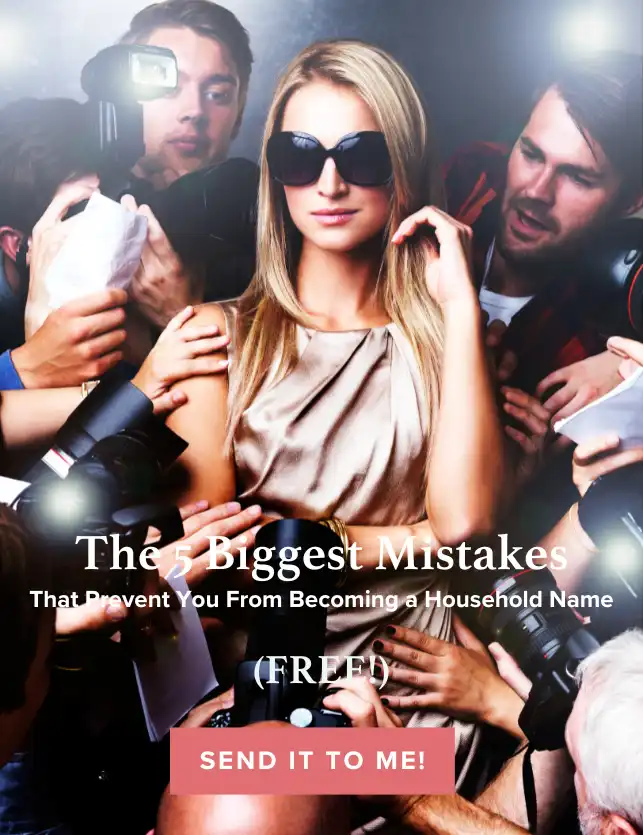14 Reasons Media Training Is Essential For Any Start-up

SUMMARY: Media training is essential for startups due to the evolving media landscape and heightened scrutiny. Startups face challenges like resource constraints, uncertain messaging, and adapting to diverse audiences. Media training helps them simplify messaging, navigate different platforms, and handle sensitive topics effectively. With proper training, startups can build confidence, develop clear communication strategies, and manage their brand image amidst changing market conditions and potential crises.
Table of contents:
- 14 Reasons Startup Media Training Is Essential
- Why Startup Media Training is Essential
- 1. Scarce Resources
- 2. Uncertainty About Messaging
- 3. Simplifying Their Messaging
- 4. Wrong Messaging For Their Intended Audience
- 5. Lacking Media Experience
- 6. Adapting Messaging to Different Media Formats and Platforms
- 7. Balancing Transparency and Confidentiality
- 8. Streamlining Complex or Technical Jargon
- 9. Explaining an Unusual or Complex Product or Service
- 10. Navigating Legal Considerations
- 11. Addressing Sensitive Topics Up-Front
- 12. Responding to Negative Publicity
- 13. Managing Crisis Communications
- 14. Cultivating Confidence, Comfort and Quirks
- Conclusion
14 Reasons Startup Media Training Is Essential
“I share the same messaging with architects as I do with potential corporate clients,” said the founder of a Metaverse and AI company I was media training who gives talks worldwide to huge audiences.
I asked her if that was bringing in the kind of business and recognition she wanted.
The answer was no.
Because she wasn’t tailoring her messaging to her specific audiences who have their own distinct needs and interests.
Once she understood that she could tell some of the same stories with a different angle or ending her whole mindset shifted—as did her messaging across all mediums —including media interviews.
Developing a coherent content messaging strategy relevant to today’s swiftly shifting business environment, economy and media landscape is an ongoing challenge—especially for startups.
Why?
Right now the public, media and investors are increasingly skeptical about the viability of startups. According to the New York Times, “Faking it is over.”
“Recent charges, convictions and sentences all indicate that the start-up world’s habit of playing fast and loose with the truth actually has consequences.”
This means that honesty, which should have been the benchmark of any business, will be the gold standard moving forward for startups.
Media training is how startups can be sure that they are truth tellers from the get go.
While Media training is critical component of a startup’s communication strategy, and it can pose numerous challenges, especially for unusual or niche startups. Speed is often vital for startups who are often under significant time pressure to get their products or services to market quickly. This can make it difficult to find the time to invest in media training.
Why Startup Media Training is Essential
Nonetheless, startups who recognize the importance of media training and prioritize it as an essential aspect of their communications strategy have the advantage in positioning themselves positively as innovators, disrupters and thought leaders.
Media training is especially crucial for those startups seeking to gain visibility, attract investment and quickly build their business and brand with integrity and spirit.
However, startups often face more unique challenges than established businesses when it comes to media training.
Some of the specific issues startups often encounter include:
1. Scarce Resources
Many startups have scarce or limited resources which impact the budget to hire a professional media trainer or invest in media training programs. This can make it challenging to invest in comprehensive media training so they can create an effective communication strategy and build relationships with the media—especially if they don’t have staff or an experienced marketing department. While they often don’t feel ready until they have series A or B funding, if they begin a PR campaign with their initial funding round they have the advantage of attracting investors and gaining market share while they are growing —and can speed being first to market.
2. Uncertainty About Messaging
Since startups are often in a state of rapid growth and continual change, developing consistent messaging and communication strategies that accurately represent their business can be difficult.
“I’ll just wing it,” is one of the most common refrains I hear from founders. At best winging it can lead to confusion and miscommunications with the media. At worst it means miffing a lifetime opportunity. Whatever is spoken or done lives forever on the Internet. In other words once a gaffe is made it can’t be retracted. And if a founder “wings it” in a pre-interview—be it a podcast or with a producer of a national broadcast outlet, and doesn’t pass this audition, there is seldom a second chance.
Startups often struggle to develop clear messaging around their products or services, which can make it difficult to communicate their value proposition to the media. This can be especially challenging for startups in emerging industries, those with unconventional business models or innovative products and services that have little precedent. But at the same time, it’s critical because any media misstep can cost customers, clients and sales in literally, the blink of an eye.

Startups often struggle to develop clear messaging around their products or services, which can make it difficult to communicate their value proposition to the media. This can be especially challenging for startups in emerging industries, those with unconventional business models or innovative products and services that have little precedent. But at the same time, it’s critical because any media misstep can cost customers and clients in literally, the blink of an eye.
In his book Blink, author Malcolm Gladwell refers to “thin slicing,” how we make very quick decisions with small amounts of information, in a split second. Which is how your audience sizes you up in an instant, sometimes before you’ve even said a word. How you enter a room, the few seconds when the camera lands on your face during a media interview, the moment you take your first step onto the stage. If a bad first impression is formed it takes time to undo it, if it’s possible at all. The founder represents the entire company offering in that everything they do, say, are and think, from their words to their website need to be in alignment with their offer.

Engineering professor Cody Friesen founder of Source Global is an excellent example of how to position, package and present his message. His hydropanels that capture and convert vapor into water “…Are in 52 countries, built over 450 projects, across 6 continents. We can bring water to anywhere on the planet. In a lot of the places that we go we are the lowest cost source of drinking water.” He goes on to say that there’s no reason the panels he invented can’t eventually be the lowest cost of delivered potable water on the planet. “Lower cost than what you flush toilets with at home and what you consider free.”
3. Simplifying Their Messaging
Simplifying key stories, statistics, facts, vignettes, analogies, acronyms and aphorisms (sound bites or talking points) are probably the most challenging part of media training for founders. It’s like taking War and Peace and turning it into Haiku. Speaking to the media is tantamount to learning a brand new language that you have to deliver in a tight time frame, under pressure, while sweating beneath hot lights in front of thousands.
On the podcast Behind Her Empire Founding Partner of Halogen Ventures Jesse Draper noticed that when women pitched her for funding they felt like they had to tell every detail of their convoluted story—including all the negative pitfalls they overcame to get to where they are now.
Instead, whether pitching an investor or the media the principles are the same. Keep it simple. Only include the most relevant stories and experiences that support the end goal. For the investor, it’s how you’re going to build a billion-dollar business. For the public, it’s how your product or service will bring joy, ease, and happiness, or save time, energy and effort.
4. Wrong Messaging For Their Intended Audience
Startups don’t always consider that they need different stories for different audiences and vertical markets. When I work with startups on their messaging content campaign we begin with three core questions that set the foundation for a strategic messaging plan.
Then we practice their core messaging and delivery through mock interviews, role-play or rehearsals, which helps build presence, create confidence, feel calm and improve the delivery of their key points to each intended audience.
We tailor different sets of messaging for specific, distinct audiences choosing stories and statistics that will resonate with them. We make these both modular (stackable) and expandable and collapsible so the founder can tell the story in short blocks and tell the same story in 10 seconds that they tell in 45 seconds.

For instance, for a current client in the tech industry we are developing messaging that will attract right-fit clients.
Another set of stories is focused on creating change in the standard leadership model to be more human-centric and accepting of the various personal and professional needs of employees—that has actually proven to be more profitable and successful in rapidly growing a business. This is part of positioning her as a thought leader in her industry as well as an expert in her field.
5. Lacking Media Experience
Many startup founders, executives or spokespersons have never interacted with the media before and may not know how to handle interviews, press conferences or media appearances. This can lead to nervousness, speaking too fast, freezing, fumbling, stumbling, babbling, or giving inappropriate or irrelevant answers.
If a founder isn’t scared silly by the thought of doing media interviews, I worry. Because it means that they have no idea what they’re in for, the level of skill and centeredness it takes to maintain their equanimity and deliver their points in an entertaining and educational way during media interviews.
Startups that have little to no experience dealing with the media are typically not aware of the dos and don’ts of media interactions. Something as simple as speaking “off the record” can endanger the viability of the company.
One off-the-cuff remark can lead to miscommunications, misunderstandings, and even negative press. That’s why we practice worst-case scenarios, aggressive and difficult personality types, and a founder’s personal trigger or stuck points. Better to discover how they get tweaked by a particular person or question in private practice sessions one-on-one than on national TV or at a conference in front of millions. Learning to juggle different personalities and techniques to anticipate and handle being caught off guard entails ongoing role-play, consistent practice and thoughtful iteration.
6. Adapting Messaging to Different Media Formats and Platforms
Many Startups focus on getting press in print publications in their industry like TechCrunch, Crunchbase and Wired etc. But for broad recognition for their product or service, and to prove their value in the marketplace, they need to adapt to different media formats, including broadcast, (TV, radio, podcasts) and digital media (Facebook or Instagram Lives etc.) as well as more diverse consumer, trade or business print and online publications.
They also need to get a feel for Zoom calls or in-person press meetings where a group of journalists from a certain sector interview them at the same time. One client I prepped to make his book a New York Times bestseller needed to field group Zoom interviews from parenting publications, educational journals and business magazines. We worked on developing three distinct messaging campaigns for each individual market sector.
Each format has its unique requirements and challenges, and startups often are caught off-guard and fail to effectively communicate their message across all formats and different time constraints. That said, with consistent practice founders can typically master all mediums adequately in a few months.
7. Balancing Transparency and Confidentiality
Startups may need to balance transparency with confidentiality, particularly if they are working on a new patent or an especially innovative product. This can make it challenging to communicate effectively with the media without giving away trade secrets or confidential information while being authentic and believable.
Recently, one of my clients didn’t want to reveal her revenue, yet I knew that during her interview with the Wall Street Journal the journalist was going to delve into her finances. We practiced different ways to share that her company was doing well financially while preserving her privacy.
8. Streamlining Complex or Technical Jargon
Startups operating in specialized or niche fields frequently use complex or technical jargon that is often challenging for the media and public to understand. When confused or alienated by industry lingo the audience tunes out and the startup loses their opportunity to engage clients, customers, partnerships and to make sales.
Communicating with the media and their audiences requires clear and concise language that the average non-industry person can understand. Often new clients ask me if I have experience in their industry. I’ve worked with everyone from the Amazon’s AI for good to Astrology.com, inventors of medical devices to blockchain experts. I tell them it’s an advantage if I’m not familiar with their field because they’ll have to speak in such a way that I get it ASAP. As their media trainer I represent the general public with whom they need to connect.

Overcoming this challenge requires startups to simplify their message, to Zenify it without dumbing it down to the most important details. To communicate their ideas in a straightforward and understandable way quickly and directly. Albert Einstein said, “Everything should be made as simple as possible, but not simpler.” This role-playing the exact scenarios they’ll encounter, including the pacing, style, timing and structure of the type of interview.
My client Jeanne Hurlbert Ph.D, CEO of Hurlbert Consulting and an expert in translating data into actionable strategies for business and government through surveys that “read people’s minds” describes the process as shifting from “Geek speak” to “Media Speak.” As a professor for 25 years at Louisiana State University Jeanne was used to speaking “academically,” which didn’t easily translate to the public at large.
After working together just a few short months she landed media placements in the Wall Street Journal, The New York Times, The LA Times, USA Today, Oprah and Friends, SmallBiz.com, Forbes.com, Monster.com, US News and World Report, Radio-TV Interview Report, Health, Smart Money, The Christian Science Monitor, CNN, National Public Radio, The History Channel, ABC News Now, and more.
From those interviews she got lucrative consulting contracts with government agencies and nationally recognized companies. She says, “The long litany of media accomplishments Susan facilitated serves as instant credibility that I could not purchase with a million-dollar advertising budget.”
9. Explaining an Unusual or Complex Product or Service
Startups with an unusual or complex product or service may find it difficult to explain it in simple terms that the media and general public can understand. This can lead to confusion and negative press.
10. Navigating Legal Considerations
Startups may have intricate legal considerations to keep in mind when communicating with the media, such as protecting intellectual property or complying with regulatory requirements and discussing sensitive issues particular to their industry. This can make it challenging to develop messaging that is both effective, compliant and easily understood.
Before one of my clients in the finance industry appeared on TV we were required to get all of our content approved by his legal department. Often he was commenting on breaking news so sometimes it was constricting given we were under tight time-frame constraints. But we created a system that worked almost flawlessly so everyone’s needs were met and he could get his unique point of view and thought leadership heard when newsjacking (jumping on a news topic or trend) opportunities presented.
11. Addressing Sensitive Topics Up-Front
Some startups may have to address sensitive topics, such as social, political, gender and workplace issues, that involve thoughtful responses. Other startups may be dealing with tricky topics such as data privacy, regulatory compliance, or ethical issues that require careful messaging and handling in media interviews that help build trust and credibility with the media and the public.
For example, one of my clients, a thought leader in industrializing the use of hemp, wanted to be sure to position his ideas as non-partisan—although he favored some decisions made by a particular party. We role-played “elephant in the room” divisive questions he was sure to be asked so he could quickly transition to the information he wanted to deliver. In a few sessions of role-play he was able to navigate these tricky questions and stay on point.

Media training for founders focuses on equipping them with the skills to address sensitive topics appropriately on the spot, in tense or trying situations, staying true to their values and mission while maintaining a positive public image that is an accurate representation of their brand.
12. Responding to Negative Publicity
Startups that have experienced negative publicity, such as a product recall or lawsuit, may struggle to regain the trust of the media and the public.
Without media training for body, facial and verbal languaging under intense pressure during media appearances they may be perceived as insincere, callous or inept as a leader. This can make it challenging to effectively communicate their brand message and may result in limited or future positive media coverage as well as loss of confidence from their funders or advisors.
While Startups often effectively use social media to reach their audience, and develop fan and customer loyalty, social media can also be a means to discredit or destroy a business. On one hand, it can be an effective tool for communication and promotion, while on the other hand, it can be a breeding ground for negative feedback, criticism and viral viciousness.
One well-known woman posted what she thought was a tasteful image of a person of color– which she was not on her Facebook page. The criticism was so fast, furious and loud that she deleted the entire conversational string. Which led to her being further disparaged. After that she scrapped a new program she was about to launch that cost her hundreds of thousands of dollars in production costs. It’s critical to keep a close watch on social media channels with continual monitoring to avoid any snafu from spiraling out of control.
13. Managing Crisis Communications
Startups may not have a plan in place for managing crisis communications, which can make it difficult to respond effectively to negative press or other issues that arise as a surprise.
In today’s troll-centric climate startups can count on confronting other types of negative publicity, such as rumors, fake news, false information, or negative reviews. With the rise AI deepfake news videos can now be easily manufactured and can go viral instantly. It takes thoughtful preparation and instant action to counter this kind of attack.
Another threat comes from competitors who can post damaging negative reviews on Amazon, Yelp or other widely searched sites that are difficult to diffuse or get taken down. Trolls can tag team to create a dust-up on social media that quickly gathers a groundswell of negative news that gets rapidly repeated across the different social platforms effectively stirring strong emotions, anger, hate or threats.
Media training, including a crisis management strategy before the founder speaks to the media will prepare startups to respond to negative publicity promptly, accurately, and effectively while avoiding ruining their reputation.

14. Cultivating Confidence, Comfort and Quirks
One of the biggest issues I see in founders and leaders is the pressure to be like someone else other than themselves — be it Steve Jobs or someone in their field who they admire who looks like they have it all. Keeping your quirks and cultivating originality is a quality founders cherish in their innovations, but which doesn’t always translate naturally to admiring it in themselves. Oscar Wilde said, “Be yourself. Everyone else is already taken.” But it takes courage, preparation and practice to take that to heart and put it into action on a moment to moment basis during the high stakes, high pressure world of media interviews.
Conclusion
Some potential solutions to these challenges include working with a media training consultant, investing in media training programs, conducting mock interviews to build confidence and skill, and developing clear and concise messaging that is tailored to each media format.
With consistent media training founders can work to develop clear messaging and communication strategies and prioritize building relationships with journalists, producers, hosts and media outlets. It’s also important for startups to stay agile and adaptable, as their needs and challenges may change over time. In addition, the market conditions dictate an essential need to be instantly responsive to fast change. In this fluid economy it’s also necessary for startups to be proactive in protecting and managing their brand image and reputation, particularly in the face of negative publicity. Media training is about carefully and consistently cultivating and curating ongoing positive perception to build the business and brand into a billion dollar enterprise that is beloved by the media and the public.
Check out our PR and Media Training Workshop to Jumpstart your Publicity

Like what you read? Share it!
Disclosure: Some of the above may be affiliate links that I will be compensated for at no cost to you. They are products or services I’ve either used, vetted or trust. Enjoy!
WE THOUGHT YOU’D ALSO LIKE THESE POSTS

























